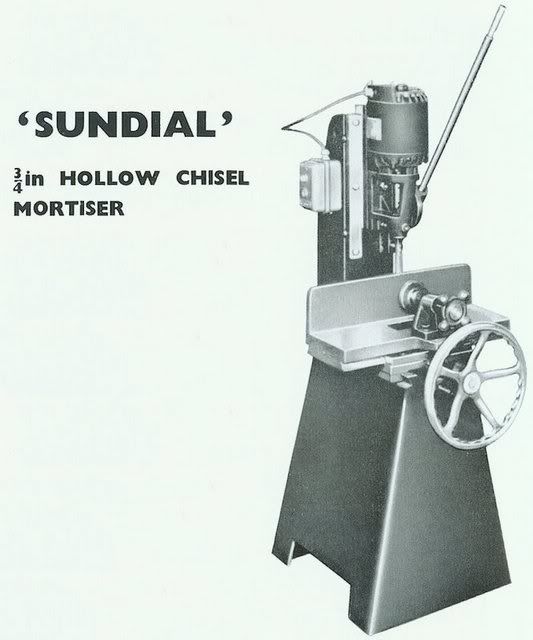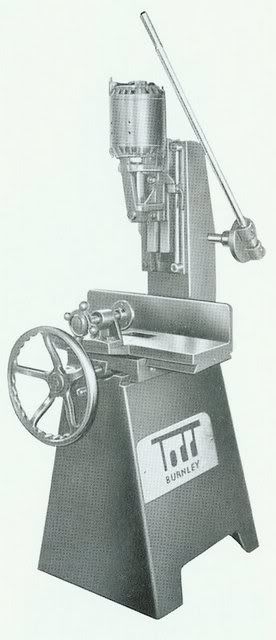murrayeast":syzowb9c said:
I believe the model before your model had a fully cast iron base like some of the older traditional machines. They must be quite rare now as I cant find a picture anywhere!!
One of the problems is that in the early days Sedgwick sold through certain machinery dealers, notably Parry's, who rebranded their machines. Thus the LK rip saw and the 3/4in hollow chisel mortiser were both rebranded "Sundial". Todd's of Burnley (a saw doctor service and small machinery dealer who still exist) also sold the same mortiser under their own name.
This machine had a sheet metal base whose sides which tapered towards the top. Part of the reason I believe this to be the forerunner of the current 571 is that upper part of the Todd/Sundial is identical to the modern offering except for the motor, and the base features a one handwheel control for both traverse movements whereas all other manufacturers I know of in the 1960s used two separate handwheels.
This is the machine in question:
and the Todd version:
both illustrations from mid-1960s catalogues.
Post-war lightweight machines rarely had cast iron bases and I have seen a Todd with what appears to be a sheet metal tapered base. Sedgwick machines seem to have followed the post-war Bursgreen lead and used cast-iron tops on sheet metal bases as did many other smaller machinery makers of the period 1950 to 1980 (e.g. Multico, Startrite, Dodd, Whitehead, Cooksley, etc.). Most of the lightweight Sagar-Bursgreen machines also followed this pattern, although Bursgreen did make a chance in the late 1950s to a cast-iron "tub" on top of a smaller sheet metal base for certain classes of machine - a design feature familiar to anyone who has used an AGS/BGS/BRT/BGP-family table saw or a BER/BER2 spindle moulder
Scrit










